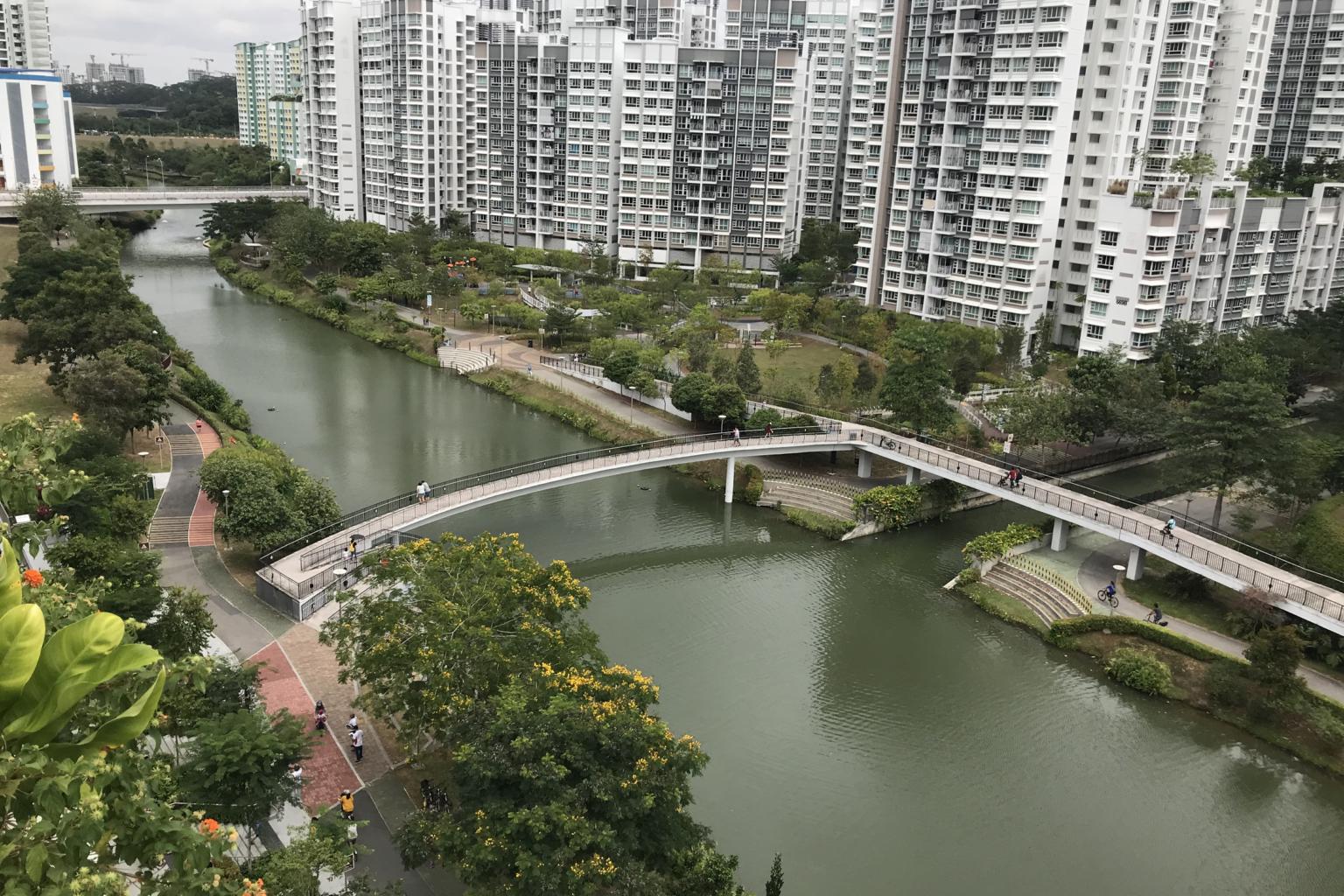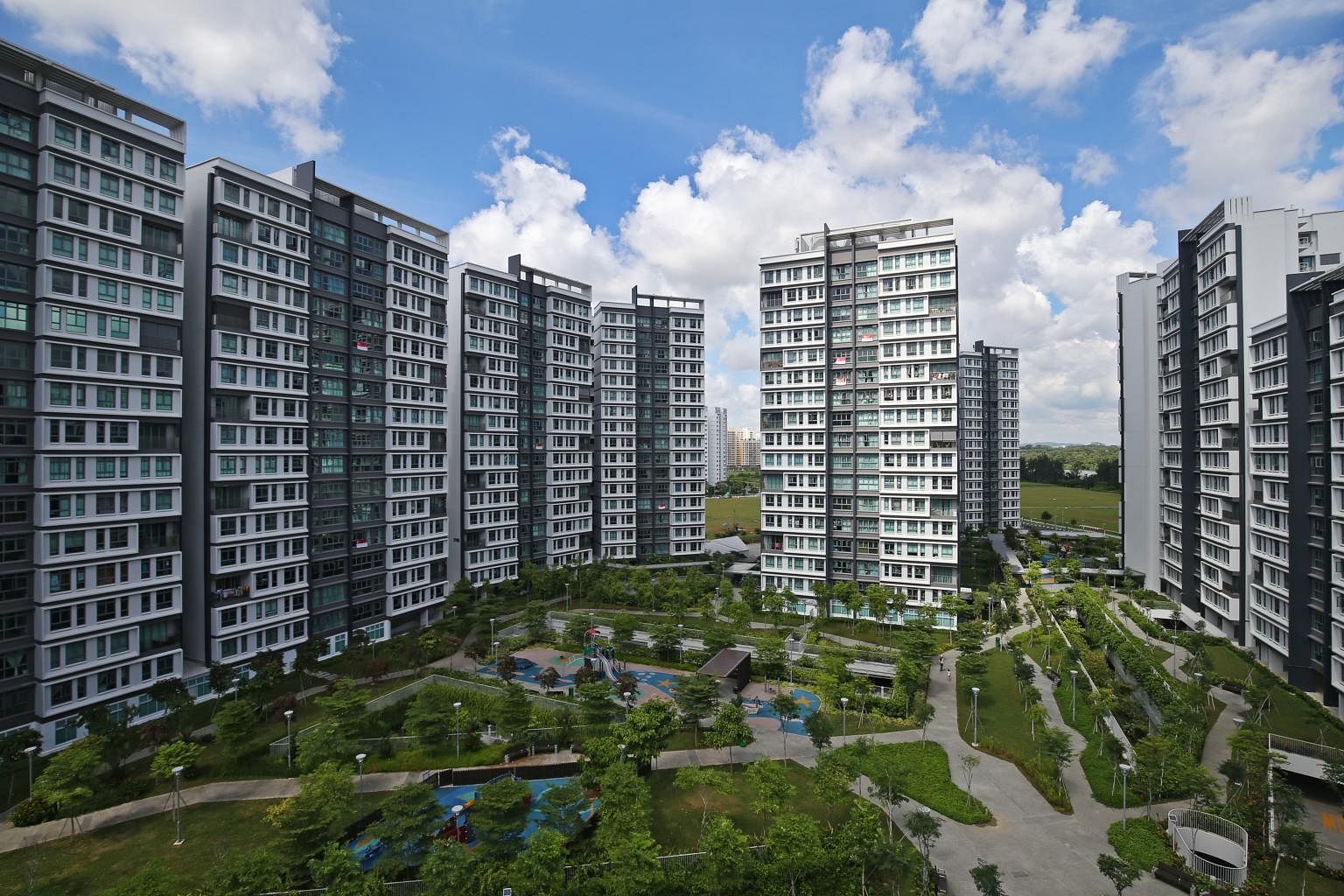From rural village to waterfront town: How Punggol got its distinct HDB town identity
Sign up now: Get ST's newsletters delivered to your inbox

Many elements of Punggol's heritage and history have been incorporated into the town planning, including the 4.2km-long man-made waterway that meanders through the town.
PHOTO: NATIONAL PARKS BOARD
Follow topic:
SINGAPORE - A decade ago, Punggol was known mainly for its lalang fields and a lone tree atop a small hill - since removed - that graced many Instagram photos.
Even further back, Punggol was called Kampung Punggol, a rural village known for fishing, poultry and pig farming, as well as its seafood restaurants and boating facilities.
Today's Punggol is a far cry from these beginnings, although elements of its heritage and history have been incorporated into the town planning.
While the "Punggol lone tree" that was the town's most recognisable landmark is long gone, in its place is the Punggol Waterway, a 4.2km-long man-made waterway that meanders through the town.
A 10m-wide landscaped promenade running along both banks of the waterway provides a space for recreation and relaxation for residents.
The town in north-east Singapore, one of the Housing Board's youngest towns, is also home to some 187,800 residents living in 49,909 HDB flats.
It is not by chance that Punggol has become the thriving town it is today.
On Wednesday (Oct 7), the HDB spelt out how Punggol was shaped into a "Waterfront town of the 21st century". The vision was first unveiled by Prime Minister Lee Hsien Loong in his 2007 National Day Rally.
A Punggol town guide, which will be out at the end of this year, chronicles the town's vision and distinct identity to help future planners and agencies unify its developments as it evolves.

Two other town design guides for Pasir Ris and Tengah will also be ready by the end of this year.
The first town design guide, for Woodlands, was launched by the HDB in 2018, and there are plans to release such manuals for each of its 24 towns.
Each of Singapore's 24 towns are planned on three scales: the town, neighbourhood and precinct.
The bird's-eye town layer provides the overall theme, concept and vision for the town, such as its landmarks and how cycling paths are laid out.
The neighbourhood - or district - layer sets out sub-themes and concepts based on the heritage and character of each area.
The precinct layer, a ground-level guide, details the design of individual projects such as the type of playgrounds or the type of street furniture to be installed.
At the town level, Punggol was planned and designed based on the overall theme of "Water and Nature", drawing inspiration from its waterfront location and lush greenery.
The town is planned with 11 housing districts, each with its own distinct character. Each district is further split into estates of 2,000 to 3,000 flats to create small and intimate communities.
Cycling paths are built in tandem with new roads, while existing roads are retrofitted with cycling paths, where feasible, to enhance residents' first- and last-mile connectivity.
At the neighbourhood level, the 11 housing districts are further segmented into nine sub-themes that correspond to the overall Punggol theme of "Water and Nature".
These include Urban Terraces, Verandah and Marine themes, picked based on the historical and physical features of different areas.
For instance, within the Waterway West district, residential developments adopt terracing building forms that step down towards the Punggol Waterway and the Punggol Reservoir, in line with the district's Urban Terraces' theme.
The terraced effect allows for the most number of HDB flats to enjoy scenic views of the waterfront.



The sub-theme is further enhanced on the precinct level, such as through a layered roof design at the drop-off porch in Waterway Cascadia, a Build-To-Order (BTO) project in Waterway West district.
Logistic manager Sam Lim, 43, who has been a resident in Punggol since 2012, said he still remembers the days when Punggol was a quiet town with few activities.
"When we moved into our first flat, there was a lalang field opposite our block and no shops were open. It was considered quite 'ulu' (remote) back then but, over the years, you can definitely feel that it has gotten more crowded," said Mr Lim.
His family of three sold their first four-room BTO flat in Punggol Drive and moved to a bigger five-room flat in Sumang Lane two years ago.
Said Mr Lim: "People ask me why I bought a flat in Punggol again. Why not? My family is used to this area, we have many friends living around us now and we also enjoy the facilities here."

